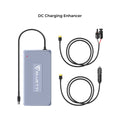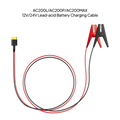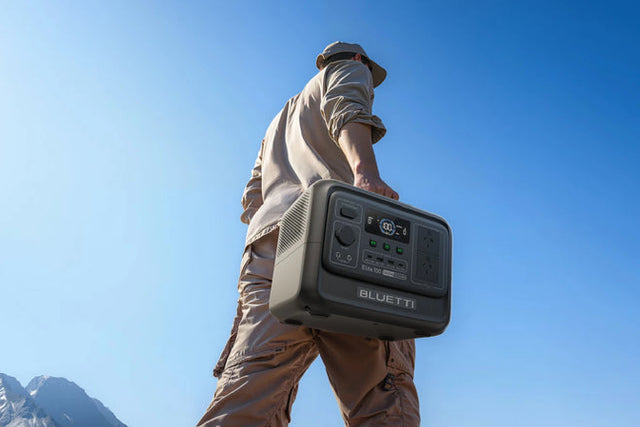In today's modern world, electricity is an essential part of our daily lives. From powering our electronic devices to providing light and heat in our homes, we rely heavily on electricity to function. However, with the constant increase in energy costs, many people are looking for ways to save money and become more energy efficient. This is where inverters for home use come in. In this article, we will provide a beginner's guide to understanding inverters for home use in Australia, explaining their purpose and why they are becoming increasingly important in our homes. Whether you're looking to reduce your energy bills or become more self-sufficient, this article will give you the basic knowledge you need to get started with inverters for home use.
I.Importance of inverters
An inverter is a device that converts direct current (DC) electricity into alternating current (AC) electricity – the type of electricity used in most household appliances and electronics. In simpler terms, it changes the form of the electrical energy from a battery or solar panel into a form that can power everyday devices. Inverters are becoming increasingly popular in Australia, especially for home use, due to their ability to provide reliable and consistent power supply. In this article, we will discuss the basics of inverters, their importance for home use in Australia, and provide a beginner's guide to understanding them.
A. Explanation of what an inverter is
Inverters work by taking the DC electricity from a power source, such as a battery or solar panel, and converting it into AC electricity. This conversion is necessary because most household appliances and electronics, such as refrigerators, televisions, and laptops, run on AC electricity. Inverters use electronic circuitry to change the direction of the electrical current, hence the name "inverter." They also control the amount and frequency of the electricity being produced, which is essential for powering different devices.
B. Importance of inverters for home use in Australia
In recent years, Australia has seen a significant rise in demand for inverters, mainly due to the country's shift towards renewable energy sources. Many Australian households are now installing solar panels on their roofs to generate their electricity, and an inverter is needed to convert this solar energy into usable electricity. In addition to being used with solar panels, inverters also serve as backup power sources during power outages. With the increasing frequency of severe weather events in Australia, having an inverter can provide households with a reliable and uninterrupted power supply during emergencies.
II. What is an Inverter?
An inverter is an electronic device that converts direct current (DC) electricity into alternating current (AC) electricity, which is the type of electricity used in most household appliances. In simple terms, it takes the energy from a battery or solar panels, and changes it into a form that can be used to power household devices.
Types of inverters available in Australia:
There are several types of inverters available in Australia, each with its own purpose and features. The most common types are:
- Square Wave Inverter: This is the most basic type of inverter, which produces a square wave output. It is an inexpensive option, but not suitable for sensitive electronic devices.
- Modified Sine Wave Inverter: This type of inverter produces an output that is closer to a sine wave, making it suitable for most household appliances.
- Pure Sine Wave Inverter: This is the most advanced type of inverter, which produces a high-quality sine wave output. It is suitable for all types of appliances, including sensitive electronic devices.
Main components of an inverter:
While the specific components may vary depending on the type and brand of the inverter, the main components of an inverter include:
- DC Input: This is where the DC power from a battery or solar panels is connected to the inverter.
- Inverter Circuit: This is the heart of the inverter, where the DC power is converted into AC power.
- Inverter Output: This is where the AC power is distributed to your household appliances.
- Controller: This component regulates the flow of electricity to ensure a consistent output from the inverter.
Differences between inverters and other energy systems:
Unlike traditional generators, which run on fossil fuels, inverters use clean and renewable energy sources such as solar panels or batteries. This makes them a more environmentally-friendly option for powering homes. Additionally, inverters are also quieter and have no moving parts, making maintenance and operation easier and less expensive.
Compared to grid-tied systems, which are connected to the main power grid, inverters allow homes to operate independently from the grid. This provides more energy independence and can also save on electricity bills by using self-generated, renewable energy. However, grid-tied inverters also have the option of feeding excess energy back into the grid, allowing homeowners to receive credits on their energy bills.
an inverter is an essential device for converting DC energy into usable AC energy for your household appliances. With various types and features available, it is important to research and choose the right inverter for your home's energy needs in order to maximize efficiency and cost savings. As Australia continues to move towards sustainable energy sources, inverters are becoming increasingly important for homeowners looking to reduce their carbon footprint and save on electricity costs.

III. How Does an Inverter Work?
In order to understand how to use an inverter for home use in Australia, it is important to first understand how an inverter works. An inverter is an electronic device that converts direct current (DC) power into alternating current (AC) power. In simpler terms, it changes the electricity from your car battery or solar panels from DC to AC, which is the type of electricity used in most household appliances.
A. Step-by-step Explanation of the Process
The first step in the process is the conversion of DC power from the source, such as a battery or solar panels, into AC power. This is done through the use of electronic components that are known as rectifiers, which take the DC power and convert it into pulsating DC power. This pulsating DC power is then fed into the inverter.
The next step is where the inverter comes into play. As the pulsating DC power enters the inverter, it is converted into a stable AC output. This is done through a process known as pulse width modulation (PWM). The inverter creates a series of pulses that vary in width depending on the amount of power needed to be converted. These pulses are then smoothed out by the use of capacitors, resulting in a stable AC output.
B. Role of the Inverter in Converting DC to AC
The main role of the inverter is to convert DC power to AC power, but it also serves other important functions. One of these is regulating the output voltage to ensure that it is at the correct level for the appliances being powered. Inverters also have built-in safety features that protect against surges and overloads, ensuring the safety of both the inverter and the connected appliances.
C. Advantages of Using an Inverter at Home
There are many advantages to using an inverter for home use in Australia. One of the main benefits is the ability to power household appliances and electronics in areas where there is no access to a traditional power source. This makes inverters a popular choice for camping, caravanning, and off-grid living.
Another advantage is the ability to save money on energy bills. Inverters can be used to power appliances and electronics during off-peak hours when electricity rates are lower, resulting in cost savings. Additionally, inverters can be used in conjunction with solar panels to store and use excess solar energy, reducing dependence on the grid and further reducing energy costs.
D. Limitations of Inverters in Certain Situations
While inverters offer many benefits, there are some limitations to consider. One of the main limitations is the efficiency of the conversion process. Inverters typically have an efficiency rate of around 80-90%, meaning that some energy is lost during the conversion process. This can result in higher energy costs in the long run.
Another limitation is the size and power output of the inverter. Inverters are available in a range of sizes and power outputs, and it is important to choose one that is suitable for your specific needs. Using an inverter that is too small for your power needs can result in overloading and damaging the inverter, while using one that is too large for your needs can be a waste of money.
understanding how an inverter works is key to using it effectively for home use in Australia. The inverter's role in converting DC to AC and its advantages and limitations should also be carefully considered in order to make the best choice for your individual needs.
IV. Installing an Inverter in Your Home
Installing an inverter in your home can be a complex process, but with the right knowledge and preparation, it can be done successfully. In this section, we will discuss the installation process, factors to consider before installation, tips for choosing the right inverter, and common mistakes to avoid during installation.
A. Overview of the Installation Process
The first step in installing an inverter in your home is to determine the type of inverter you need. In Australia, there are three types of inverters commonly used for residential purposes – standalone, grid-tied, and hybrid inverters. Each type has its own benefits and limitations, so it's important to research and choose the one that best suits your home's needs.
Once you have chosen the type of inverter, the next step is to select the location for installation. The inverter should be installed in a well-ventilated area with good airflow to prevent overheating. It should also be mounted at a safe distance from any flammable materials and away from direct sunlight.
Once the location is determined, the installation process can begin. The inverter should be installed by a licensed electrician who has experience with solar systems. The process involves connecting the inverter to your home's electricity grid and connecting the solar panels to the inverter. The electrician will also need to install a switchboard and a meter to monitor the energy production and usage.
B. Factors to Consider Before Installation
Before installing an inverter in your home, there are a few important factors to consider. First, you should assess your home's energy needs and the amount of energy your solar panels can produce. This will help you determine the appropriate size and type of inverter for your home.
You should also consider the location of your home and the level of sunlight it receives throughout the day. This will affect the performance of your solar panels and the inverter, so it's important to choose a suitable location for installation.
Additionally, it's important to check with your local electricity provider about any regulations or permits required for installing an inverter. Some areas may have restrictions or specific guidelines for connecting solar systems to the grid, so it's best to be informed beforehand.
C. Tips for Choosing the Right Inverter for Your Home
When choosing an inverter for your home, there are a few key factors to keep in mind. First, you should consider the efficiency of the inverter. A higher efficiency inverter will produce more energy from your solar panels, resulting in a higher return on investment in the long run.
You should also consider the warranty offered by the manufacturer. A longer warranty period is an indication of a reliable and high-quality inverter. It's also important to choose an inverter that is compatible with your solar panels and offers the necessary features for monitoring and controlling your energy usage.
D. Common Mistakes to Avoid During Installation
While installing an inverter, there are a few common mistakes that should be avoided. One of the most common mistakes is choosing an inverter that is too small for your energy needs. This can result in the inverter being overloaded and may lead to malfunctions and decreased efficiency.
Another mistake is improper wiring and connections. It's important to follow the manufacturer's instructions and hire a licensed electrician for the installation to ensure proper wiring and connections.
Lastly, always check for any government rebates or incentives available for installing a solar system in your home. These can help offset the initial cost and make the investment more affordable.
installing an inverter in your home can be a great way to reduce your energy costs and contribute to a more sustainable future. By following the proper installation process and considering the important factors, you can ensure a successful and efficient solar system for your home in Australia.
V. Understanding Inverter Efficiency
When it comes to choosing an inverter for your home in Australia, understanding efficiency is crucial. In simple terms, efficiency refers to how well an inverter converts DC power from your solar panels into AC power for your household appliances. A higher efficiency means that your inverter can convert more of the available solar energy into usable electricity, resulting in greater savings on your electricity bills.
A. Definition and Importance of Efficiency
The efficiency of an inverter is measured in a percentage, typically ranging from 90% to 98%. This means that for every 100 watts of solar energy produced by your panels, 90% to 98% of that energy is converted into usable electricity. The remaining percentage is lost as heat or in other processes within the inverter.
The higher the efficiency, the less energy is wasted, and the more you can benefit from your solar panels. This is especially important in Australia, where sunlight is abundant and harnessing it efficiently can lead to significant savings on energy bills.
B. How to Determine the Efficiency of an Inverter
To determine the efficiency of an inverter, you can check its technical specifications or look for the energy rating label. The label will indicate the efficiency of the inverter under standard test conditions, giving you an idea of how well it will perform in converting solar energy into usable electricity.
Another way to determine efficiency is by comparing various inverters' specifications and choosing the one with the highest efficiency rating. However, it is essential to keep in mind that the actual efficiency of an inverter may vary depending on factors such as the size and orientation of your solar panels, temperature, and shading.
C. How Efficiency Affects the Performance of Your Home Inverter
The efficiency of your inverter can have a significant impact on its overall performance. A higher efficiency means that your home will receive more usable energy from your solar panels, helping you save on electricity bills. Additionally, a more efficient inverter will also result in fewer carbon emissions, making it an environmentally friendly choice.
Poor efficiency, on the other hand, can lead to higher electricity bills and a longer payback period for your solar panel investment. It can also put a strain on your inverter, causing it to overheat and potentially reducing its lifespan.
D. Tips for Maximizing the Efficiency of Your Inverter
While the efficiency of your inverter is determined by its technical specifications, there are a few things you can do to ensure that your inverter performs to its fullest potential. Firstly, make sure your solar panels are clean and free of any shading. This will allow them to produce maximum energy for your inverter to convert.
Secondly, regular maintenance and servicing of your inverter will help keep it running efficiently. Keep an eye out for any warning signs, such as strange noises or decreased performance, and have a professional inspect and service your inverter if needed.
choosing an inverter from a reputable and trusted brand can also help ensure its efficiency and performance. Do your research and read reviews from other homeowners to make an informed decision.
understanding efficiency is crucial when it comes to choosing an inverter for your home in Australia. By knowing what efficiency means, how to determine it, and how it affects your inverter's performance, you can make an informed decision and maximize the benefits of solar energy for your home.
VI. Maintenance and Care of Inverters
Inverters play an essential role in providing reliable and uninterrupted electricity supply to homes in Australia. However, like any other electronic equipment, inverters require regular maintenance and care to ensure optimal functionality and longevity. In this section, we will discuss the importance of maintaining your inverter, common issues that may arise, troubleshooting and fixing methods, and professional servicing options available in Australia.
A. Importance of Regularly Maintaining Your Inverter
Regular maintenance of your inverter is crucial for several reasons. Firstly, it helps in identifying any potential problems early on, preventing them from turning into more significant issues that may require expensive repairs or replacements. Secondly, maintenance helps in ensuring the efficiency and optimal performance of your inverter, which translates into cost savings on your electricity bill. Lastly, proper maintenance can also extend the lifespan of your inverter, giving you a longer return on your investment.
B. Common Issues that May Arise with Inverters
Despite being a reliable source of power, inverters may encounter some issues from time to time. Some common problems include overload, overheating, circuit board failures, and battery or fan malfunctions. These issues can be caused by various factors such as poor installation, lack of proper ventilation, and insufficient battery maintenance. It is essential to be aware of these problems and know how to troubleshoot and fix them.
C. How to Troubleshoot and Fix Common Problems
Before attempting to troubleshoot and fix any issues with your inverter, it is crucial to turn off the power supply and unplug it from the main power source. One of the most common problems with inverters is when they become overloaded. This can happen if too many appliances are connected to the inverter, exceeding its capacity. To fix this, simply disconnect some appliances and redistribute the load evenly.
If your inverter is overheating, check for any obstructions that may be blocking the ventilation or clean the fan blades. In the case of a circuit board failure, you may need to seek professional help as it requires technical expertise. It is also essential to regularly check and maintain your battery, ensuring it is free from corrosion and has sufficient charge.
D. Professional Servicing and Maintenance Options in Australia
In addition to troubleshooting and fixing common problems, it is recommended to have your inverter professionally serviced at least once a year. This ensures that all components are functioning correctly and any potential issues are addressed before they become major problems. In Australia, there are specialized companies that offer maintenance and servicing for inverters. They have trained technicians who can identify and fix any issues efficiently, ensuring your inverter continues to operate at its best.
Some companies also offer extended warranties and maintenance packages, which can provide added peace of mind for homeowners. It is advisable to research and compare different options to find the best fit for your needs and budget.
regular maintenance and care of your inverter are essential for its optimal functioning and longevity. By being aware of potential issues and knowing how to troubleshoot and fix them, you can ensure a reliable and uninterrupted supply of electricity to your home. In addition, taking advantage of professional servicing options in Australia can help in keeping your inverter in top condition for years to come.
1. What is an inverter and how does it work for home use in Australia?
An inverter is an electronic device that converts direct current (DC) power from sources such as solar panels or batteries into alternating current (AC) power that can be used in homes in Australia. In simple terms, it changes the form of electricity from one type to another for household appliances to use.
Inverters work by using a process called pulse width modulation (PWM). This means that the inverter switches the electricity flow on and off very quickly, creating a series of pulses that mimic AC power. These pulses are then smoothed out by capacitors to produce a more stable AC current.
In Australia, inverters are used in homes to convert the DC power generated by solar panels into AC power that can be used to power household appliances. This allows homeowners to use renewable energy sources to power their homes, reducing their reliance on traditional fossil fuel-based electricity. Inverters also have safety features that help protect the home's electrical system from power surges and fluctuations.
2. What are the benefits of using an inverter for home use?
There are a number of benefits to using an inverter for home use in Australia. The main advantage is that it allows you to convert DC (direct current) power from a renewable energy source, such as solar panels or wind turbines, into AC (alternating current) power that can be used to power household appliances and electronics.
In addition to being able to harness clean and renewable energy, using an inverter can also save you money on your electricity bills. By using solar or wind power to generate your own electricity, you can reduce your reliance on the grid and potentially even sell excess energy back to the utility company.
Inverters also offer a backup power solution in case of a power outage. Many inverters have a built-in battery storage system, allowing you to store energy for later use. This can be especially useful in areas prone to blackouts or during natural disasters.
Another benefit of using an inverter is its versatility. It can be used for a variety of applications, from powering small appliances like laptops and phones, to larger appliances like refrigerators and air conditioners.
Furthermore, using an inverter is better for the environment as it reduces carbon emissions and promotes cleaner energy usage. It is a more sustainable and eco-friendly option for powering your home.
In summary, using an inverter for home use in Australia has numerous benefits, including the ability to harness renewable energy, save money on electricity bills, provide a backup power source, and promote sustainability.3. What are the different types of inverters available for home use in Australia?
In Australia, there are three main types of inverters that are commonly used for home use: standalone inverters, grid-tied inverters, and hybrid inverters.
Standalone inverters: These are also known as off-grid inverters and are used in homes that are not connected to the main electricity grid. They convert the direct current (DC) power from sources such as solar panels or batteries into alternating current (AC) power that can be used to power household appliances.
Grid-tied inverters: These are used in homes that are connected to the main electricity grid. They convert the DC power from sources such as solar panels into AC power that can be used in the home, and any excess power can be sent back to the grid for a credit on the homeowner's electricity bill.
Hybrid inverters: These are a combination of standalone and grid-tied inverters, and are becoming increasingly popular in Australia. They allow households to use both solar power and grid power, and can also store excess solar power in batteries for use during peak times or in case of a power outage.
4. How do I choose the right size and capacity of an inverter for my home?
Choosing the right size and capacity of an inverter for your home in Australia can be a daunting task, especially for beginners. However, there are a few key factors to consider to ensure you make the right decision.
The first step is to determine your power needs. This includes calculating the total amount of energy your household consumes on a daily basis. You can do this by looking at your electricity bills or using an energy monitor. It's important to also consider any appliances or devices you may want to power with the inverter.
Next, consider the size and type of inverter that will best suit your needs. Generally, the size of an inverter is measured in kilowatts (kW), and the capacity in kilowatt-hours (kWh). To determine the appropriate size, you will need to multiply the total energy consumption by two, as inverters are only able to run at their maximum capacity for short periods of time.
Another important factor to consider is the type of inverter. There are three main types: grid-tied, off-grid, and hybrid inverters. Grid-tied inverters are connected to the mains grid and can only operate when the grid is up and running. Off-grid inverters, on the other hand, are designed to work independently and are often used in remote areas. Hybrid inverters combine the features of both grid-tied and off-grid inverters, making them a popular choice for homes with solar panels.
Lastly, it's crucial to consider the quality and reputation of the inverter brand. Research different brands and read reviews from other homeowners to ensure you choose a reliable and efficient inverter for your home.
selecting the right size and capacity of an inverter for your home in Australia requires careful consideration of your power needs, type of inverter, and brand reputation. Taking the time to properly research and understand these factors will help you make an informed decision that will meet your energy needs and budget.
5. What are the potential drawbacks or limitations of using an inverter for home use in Australia?
While inverters offer many benefits for home use in Australia, there are also a few potential drawbacks and limitations to consider. One limitation is the initial cost of purchasing and installing an inverter. Depending on the size and type of inverter, it can be quite expensive. In addition, inverters may require regular maintenance and repairs, which can also add to the overall cost. Another drawback is the potential for decreased efficiency in certain weather conditions. For example, in very hot temperatures, the inverter may not function as well and could lead to a decrease in energy production. Additionally, using an inverter may not be suitable for all types of home appliances, as some may require more power than an inverter can provide. there is also the risk of potential electrical hazards if the inverter is not installed or used properly.
inverters are a crucial component for modern homes in Australia as they allow us to use our electronic devices and appliances efficiently, even during power outages. By converting DC power from batteries or solar panels into AC power, inverters provide a reliable and continuous supply of electricity to our homes. They also allow us to take advantage of renewable energy sources and reduce our reliance on traditional power grids. When choosing an inverter for your home, it is important to consider factors such as power output, efficiency, and compatibility with your existing electrical system. With the right inverter, you can enjoy uninterrupted power supply and contribute to a more sustainable future. We hope this beginner's guide has helped you understand the basics of inverters and how they can benefit your home in Australia.












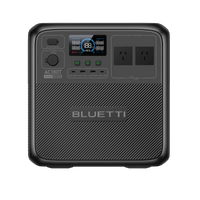












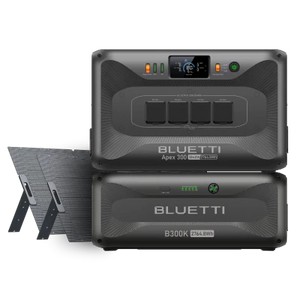





















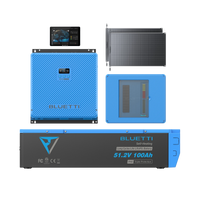


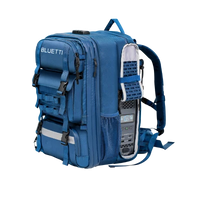


















![[Phased Out] BLUETTI B80P Expansion Battery | 806Wh](http://www.bluettipower.com.au/cdn/shop/files/202310025B80P_2000-2000px_4_4caa0c1c-4dab-4272-9e9b-2b7507e5bd81.jpg?v=1713777870&width=200)
![[Phased Out] BLUETTI B210P Expansion Battery | 2,150Wh](http://www.bluettipower.com.au/cdn/shop/files/2_08cf9ef3-03a4-4489-b641-d3edb8094896.webp?v=1716016566&width=200)
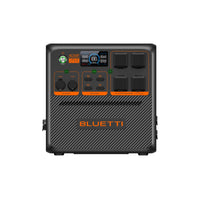


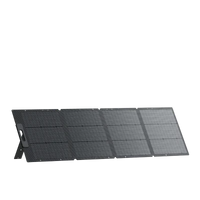


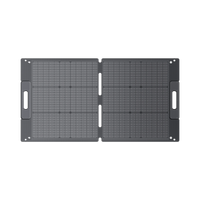





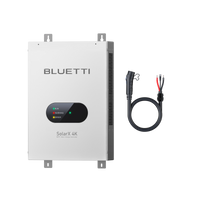






















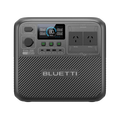

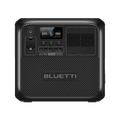






























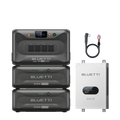



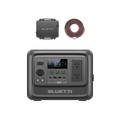





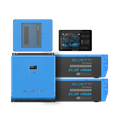














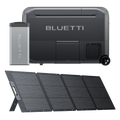




















![[Phased Out] BLUETTI B80P Expansion Battery | 806Wh](http://www.bluettipower.com.au/cdn/shop/files/202310025B80P_2000-2000px_4_4caa0c1c-4dab-4272-9e9b-2b7507e5bd81.jpg?v=1713777870&width=120)
![[Phased Out] BLUETTI B210P Expansion Battery | 2,150Wh](http://www.bluettipower.com.au/cdn/shop/files/2_08cf9ef3-03a4-4489-b641-d3edb8094896.webp?v=1716016566&width=120)


















